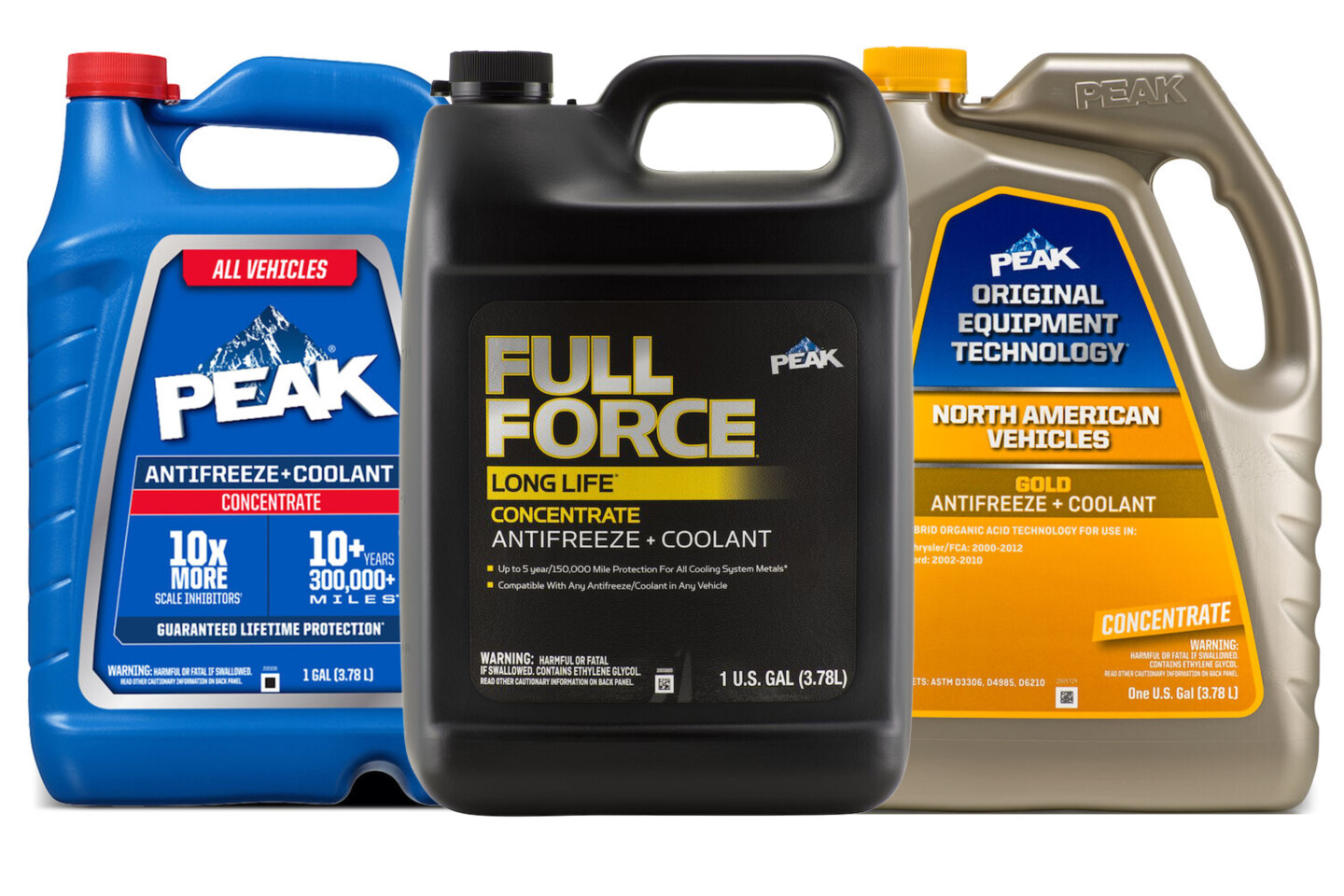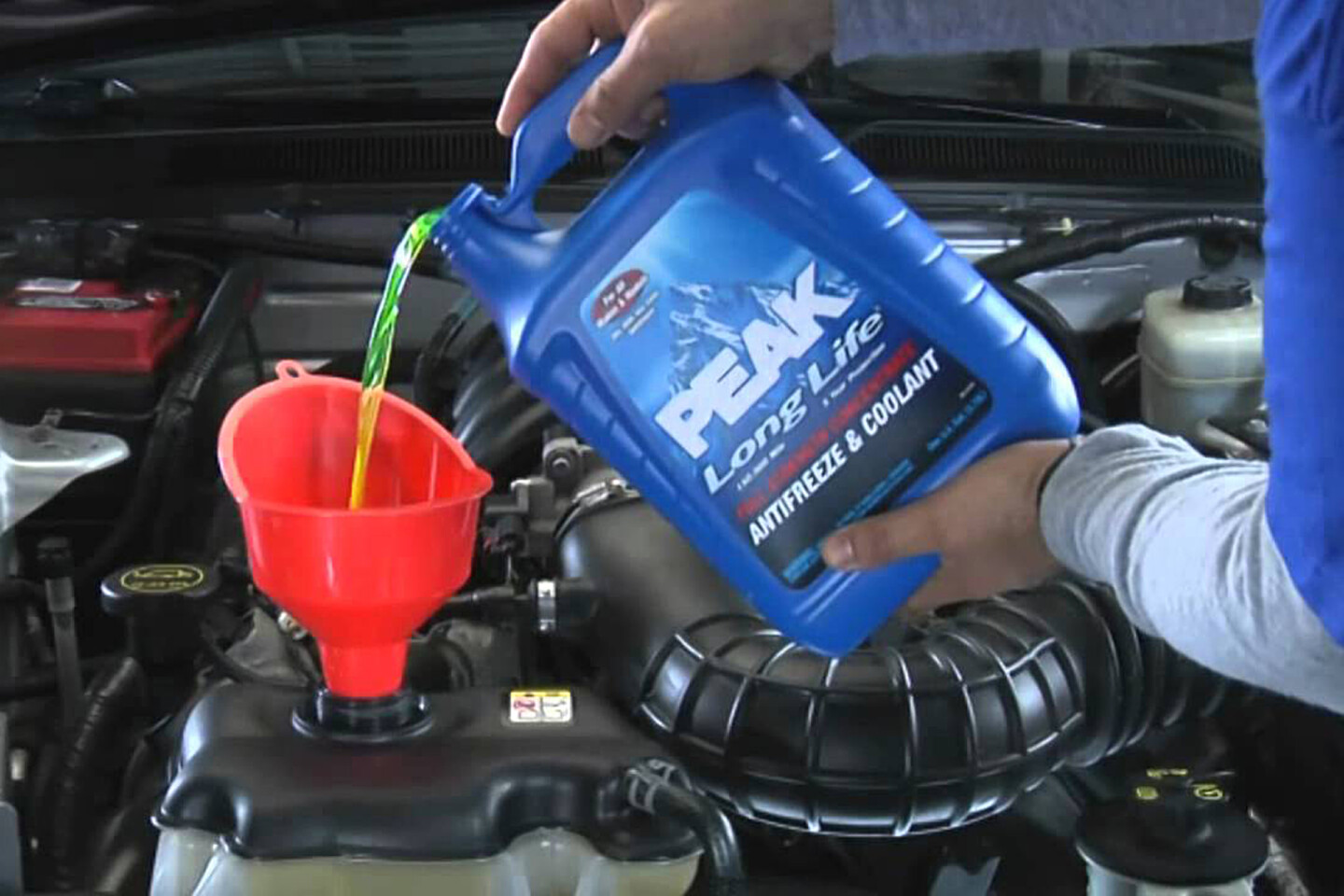When discussing which antifreeze for any given truck or car, one thing is certain — it can be a confusing subject. Before 1990, it was simple. You went to the store and bought “the green stuff,” mixed it with water, and were done. That is not the case anymore. Not only are there various colors of coolant, but that variation denotes an even deeper difference. The question of which antifreeze to use is more confusing than ever.
Since the antifreeze running through your engine does not have an unlimited lifespan, you will need to change it from time to time. That said, how do you know which antifreeze to use? I could say look at your owner’s manual, but nobody ever does. That’s why I reached out to the people at Old World Industries (OWI), the makers of PEAK antifreeze to get some solid information.
Which Antifreeze – There Is A Difference?
To start with, traditional coolant (that old green stuff) is known as IAT. That acronym correlates to Inorganic Acid Technology. It is fortified with silicates and phosphates, which are used to keep corrosion down within those early cooling systems that were made of brass, copper, and cast iron.
When the 1980s rolled around, cars began to incorporate more aluminum parts and rubber seals in the system. At first, no one suspected the coolant as being the culprit for issues that started to arise. For example, the silicates were shown to cause large amounts of scale to form in the cooling system when they came in contact with aluminum. Phosphate, well, over time, they dried and corroded anything rubber, like water pump seals. What’s more, the life expectancy of IAT antifreeze is roughly 36,000 miles. If it remains in the system longer, electrolysis corrodes the system. It was during the early ’90s that Organic Acid Technology (OAT) was developed.
First and foremost, OAT coolant is devoid of both phosphates and silicates and offers similar corrosion resistance as the green mix. It also has a replacement interval of 150,000 miles or generally, five to seven years. Us older guys recognize the early version of OAT as DexCool.
Many truck owners learned the hard way that mixing traditional IAT (green) antifreeze with an OAT antifreeze can cause a world of problems. Early on, OAT got a lot of grief because unknowing customers were mixing traditional green IAT antifreeze into their Dexcool systems. Over time, this blend creates a brown nasty sludge. Neither antifreeze was to fault, it was the blending of incompatible substances that caused the issue.
OAT coolant is specifically designed to offer anti-corrosive protection to aluminum and nylon parts found in newer model trucks and cars. Originally, OAT was marketed as a “permanent” or “long life” antifreeze. However, they should still be replaced every three to five years. Another important difference is OAT antifreeze uses propylene glycol as the base. This is less harmful than IAT’s Ethylene Glycol to pets, kids, and the environment.
Getting It Right
OAT coolant is usually orange, yellow, or red, but can also come in blue, and very dark green depending on the variant and the manufacturer. When talking about your Ford, Chevy/GM, or Ram truck, PEAK recommends the following:
Ford: When adding antifreeze to your 2010 and newer truck, use either PEAK Global LifeTime Concentrate Antifreeze + Coolant, PEAK Antifreeze + Coolant Concentrate, or Full Force Long Life Concentrate Antifreeze + Coolant. All are compatible with any color or type of coolant.
GM/Chevy: In 2010 and newer trucks, use PEAK Original Equipment Technology Concentrate Antifreeze + Coolant For North American Vehicles, PEAK Antifreeze + Coolant Concentrate, or Full Force Long Life Concentrate Antifreeze + Coolant. Again, all are compatible with any color or type of antifreeze/coolant.
Ram: 2010 and newer trucks use either PEAK Global LifeTime Concentrate Antifreeze + Coolant, PEAK Antifreeze + Coolant Concentrate, or Full Force Long Life Concentrate Antifreeze + Coolant. All are compatible with any color or type of antifreeze/coolant.
Since the above mentions all are compatible when deciding which coolant what’s the deal? I thought mixing different kinds could be bad. Well, yes and no. Let’s talk about Hybrid Organic Acid Technology (HOAT). This antifreeze uses Nitrates to create an antifreeze that is between IAT and OAT. It works and is a great alternative in a pinch — like when you have to add antifreeze when stuck alongside the road. HOAT products are usually referred to as “global” and you will almost always find a label on the packaging that reads, “Meets or exceeds G-05 specifications”.
Both Ethylene Glycol and Propylene Glycol are colorless fluids. Given the variation in coolant “blends”, manufacturers add the color so it can be easy to differentiate one kind from another.
How Do I Test Antifreeze?
In reality, you should check your coolant’s condition at least once a year. Just because the owner’s manual may say that the coolant is designed to last up to five years or 150,000 miles – that doesn’t mean it will.
Coolant test strips are an inexpensive way to test the condition of your coolant. Simply dip one into the coolant, then the little pads on them change color, and you compare that color with the colors on the side of the bottle. It instantly tells you whether the coolant is good or bad.
Another test requires a simple volt meter. First, set it to DC volts. Then connect the negative cable to the negative terminal of the battery. The positive lead of the tester is then dipped into the coolant while the engine is running at a high idle. The reading should be less than 0.4 volt. If it exceeds that voltage, the coolant needs replaced and the system flushed.
Not All Water Is Created Equal
The only universal part of coolant is water— different coolant types should never be mixed. Some studies show that mixing IAT and OAT antifreeze actually caused more corrosion than water alone (remember the GM Dexcool issue above). If you are unsure what antifreeze is in your system, the fluid is brown, an off-color from what is recommended, or what has been put in is a HOAT “all makes” coolant, the best option is to plan a flush as soon as possible.
Lastly, we need to discuss water, because it’s actually not the easy part! Distilled water is the best option when mixing. While some people choose the 50/50 mix of antifreeze, buying concentrated and mixing yourself is the most cost-effective way to go. Using tap water, which is full of silicates, minerals, and other corrosion-causing garbage, is the worst possible thing to do over time. Distilled water or water filtered through reverse osmosis costs roughly $1.00 a gallon and is pure water. While tap water may seem like an easy thing, avoid the temptation to use it.





















